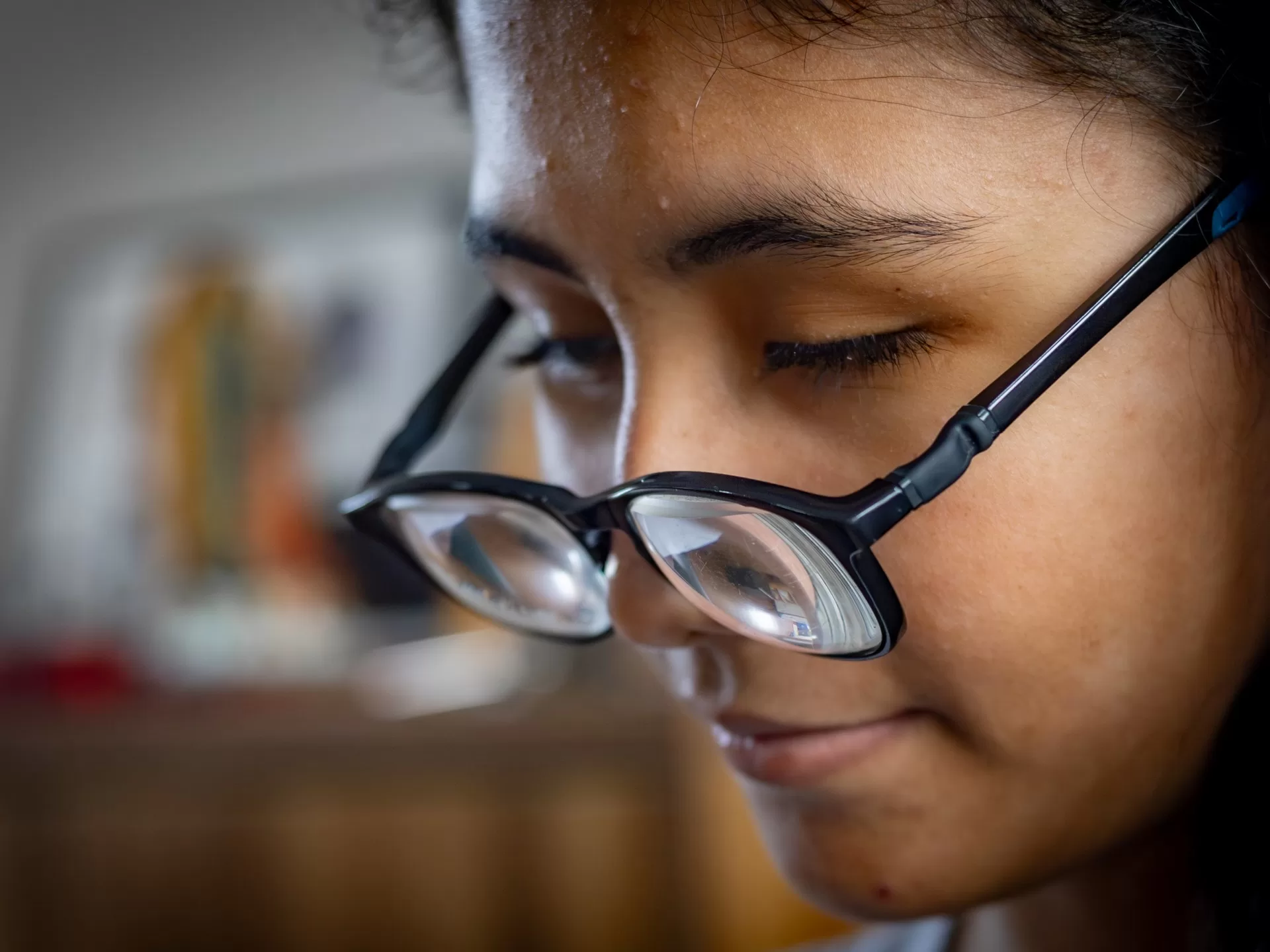About 18 percent of the population of Costa Rica, a country of about five million, lives with a disability. These individuals face difficulties when it comes to accessing education, work, and public spaces.
Among these disabilities are visual impairments. As a 23-year-old living with an eye disease called keratoconus, which causes loss of vision, I’m interested in how young people with visual disabilities navigate their everyday lives as they follow their dreams and work towards their goals.
I decided to focus on these “caminos invisibles” or “unseen paths” in my photo essay for the Safe Photography Project, run by the international youth agency Restless Development, and part of a global campaign to end violence against children. The project enlisted 10 young photographers from around the world to examine what “safe” means to them.
For me, a lack of accessibility signals a lack of empathy and is a form of violence that promotes exclusion. In my photo essay, I wanted to illustrate the challenges and courage of two subjects with visual impairments, Camila and Luis, both 13, as they adapt to the world to be as independent as possible. Key to this is the support of friends and family who provide a sense of safety, allowing both teenagers to grow and develop without the fear of being misunderstood or rejected.
We meet Camila Valverde Gonzales who was diagnosed with microphthalmia and bilateral cataracts when she was two months old and underwent multiple surgeries before the age of one. When she was nine, she lost most of the vision in her right eye and was forced to make changes in her everyday life, such as increasing the font size on her iPad and mobile phone and improving lighting at home to be as autonomous as possible.
Luis Diego Espinoza Cedeño was born with limited vision due to ocular albinism, nystagmus and strabismus although his parents were initially told he was blind at birth. At age one, Luis had to start wearing glasses to protect his eyes. He spent his first five years at a school for children with disabilities and then was able to join a regular school.
“As an adolescent, Luis Diego has developed just the same as any other person. My son is very disciplined, he can cook and do everyday tasks, he plays football, rides a bicycle, draws very well. He is the kind of boy who gets frustrated very easily if he can’t do things,” says his mother Andrea Cedeño Suárez.
For this essay, I’ve employed certain photography techniques to depict Camila and Luis’s perspectives. Extreme close-ups give the viewer an intimate sense of the subject while long exposures convey how they see their surroundings.
Through these photos, I want the viewer to enter a world that might be perceived as a limitation but is also a source of strength. Each image is a snapshot of resilience, adaptation and personal growth, inviting the viewer to reflect on what visual disability means beyond impairment.
